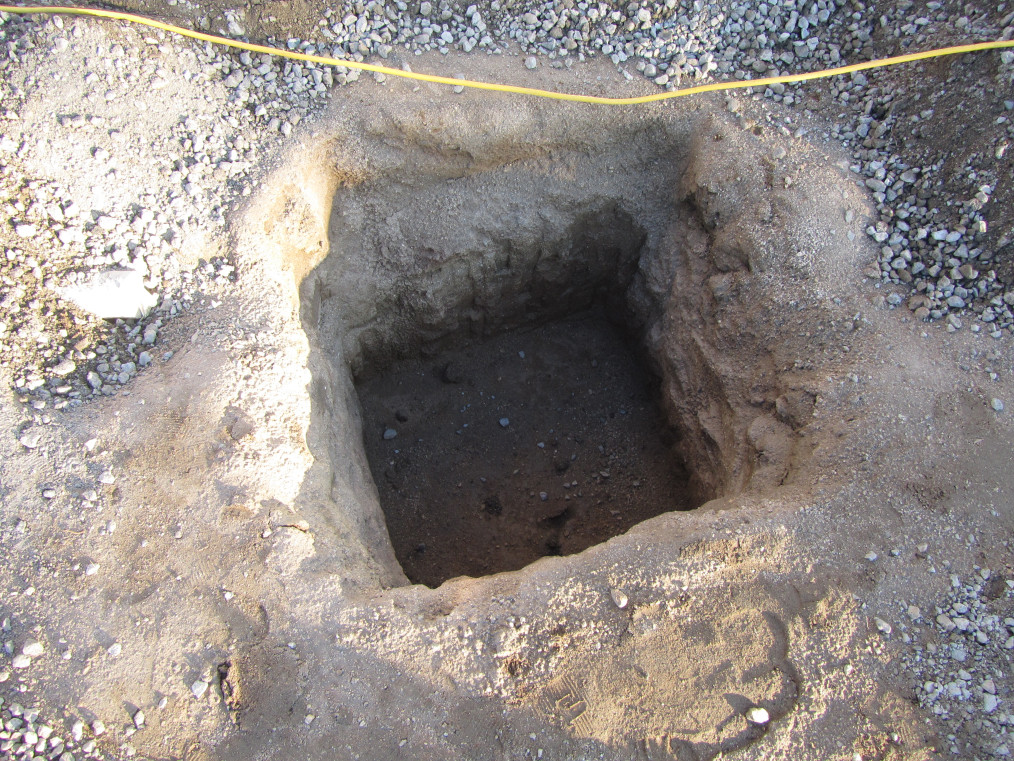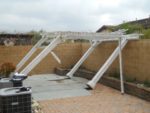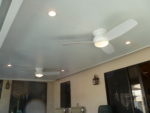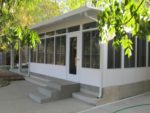Just how big do those footings need to be, anyway?

Most of the time the patio covers that we install for homeowners are attached to either an existing concrete slab or we arrange for a new slab to be poured. This provides for attachment for the posts, and the top is connected to the house and a header beam, which ties into those posts. But every now and then there is no slab, and for one reason or another the customer either cannot install one or doesn’t want to install one. Now we need an alternative attachment method. The most commonly used method is to place concrete footings under each post location and attach the posts to those. This method is supported by the manufacturer’s engineering print, and that is what determines the size that each footing needs to be. To put it bluntly, they are huge, and their size is almost always commented on. Why would you need three to four 32″ – 36″ cubed footings to hold up a light-weight aluminum patio cover? On the face of it, it seems like tremendous overkill.
Well, here it is. We’re not holding up the patio cover…we’re holding it down! The average size aluminum patio cover sale for our company is ten feet by 14 feet (10 x 14). This is a lot of surface area without a lot of weight. It is virtually an airplane wing that wants to fly away in the wind. The weight of the house holds down the rear of the cover, by it being bolted into the studs every 16″. But the front needs something to hold it down. A concrete pad equivalent to the size of the patio cover, attached with the correct, per engineering, number of posts provides enough hold-down force to keep the patio cover from heading off to Oz when the winds get really moving. There are lots of other technical details, of course, like correct type of attachment bolts, number of screws, thickness of aluminum, etc. but that is covered by the engineering, and isn’t really the main point here. We need enough weight at the attachment points (under the posts) to hold the patio cover down. When there is no slab, this is where the footings come in. Pull out the right page on the engineering, enter the table for your size patio cover and wind speed zone, and you will get the size and number of footings required by the manufacturer to ensure that your new patio cover stays put.
So, we need those big, big footings to hold your shiny, new patio cover in place. Don’t want that three foot square of concrete showing around each post? Ask that it be poured a few inches deeper so you can put decorative rock, brick or flag stones there for decoration…or put dirt back in on top of the concrete and put some flowers in. I don’t recommend letting the grass grow back in, because weed trimmers can do some serious damage to the finish on your posts. And none of those lifetime warranties cover weed trimmers…





